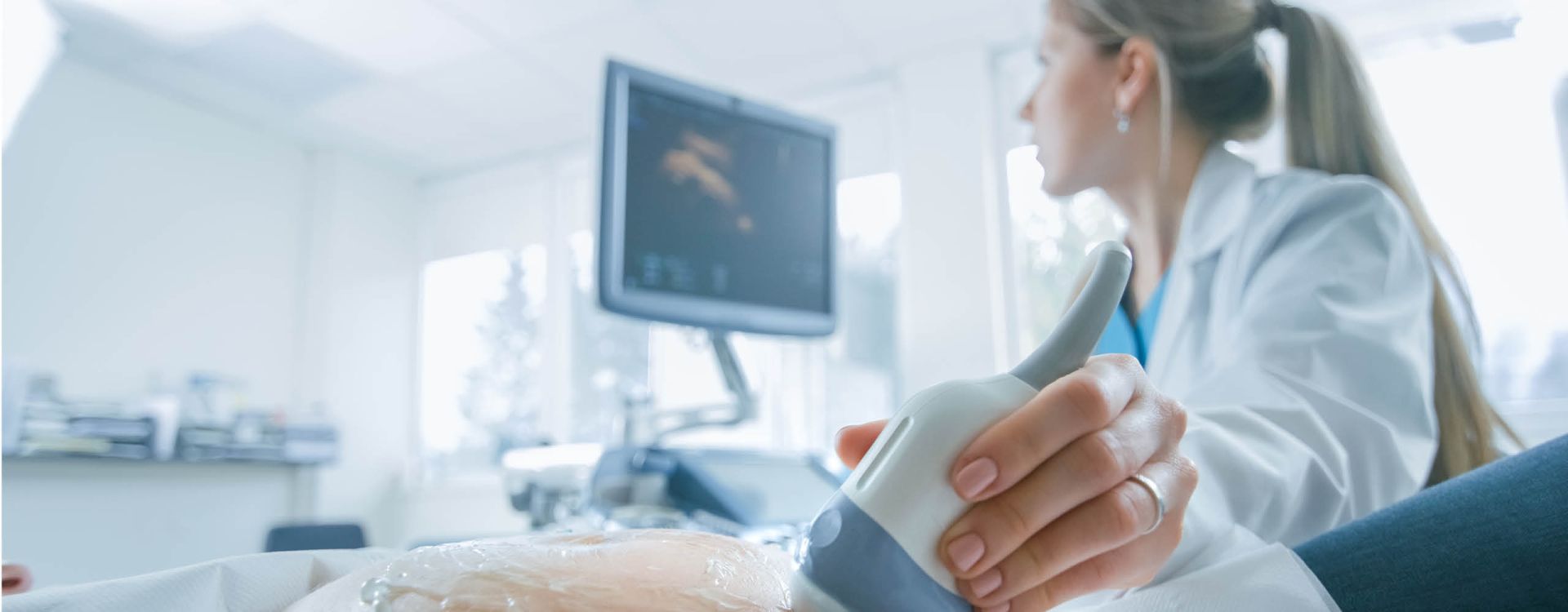It’s only natural to want to give your baby the best start possible in life by eating foods that foster healthy fetal development. To that end, it seems like every other week, a new food fad is touted with breathless excitement by social media influencers and pregnancy “experts”.
Now, caviar is trending as a nutrient-packed superfood for pregnant women to promote fetal neurodevelopment (among other health benefits). But does it really help? How does it work? Is it worth the high cost? What about mercury in fish?
Let’s dive in…
What Is Caviar?
Caviar is a delicacy derived from the unfertilized eggs of female sturgeon fish.
Sturgeon fish are native to the Black Sea and Caspian Sea but can also be found in both subtropical and subarctic waters in North America and Eurasia, including the Pacific Northwest and southern Atlantic coasts of the U.S., the Great Lakes, and the Mississippi River.
They’re huge fish, typically weighing around 60 pounds, but they can grow to be colossal. Some belugas in the Caspian Sea are reported to have grown to 18 feet and 4,400 pounds. Sturgeon can also live more than 100 years, though 50-60 years is the average. They reach sexual maturity at 15-20 years old [*].
No matter where they’re found, they’re prone to overfishing and even extinction for the value of their roe, which can cost hundreds of dollars for just 30 grams (about 2 tablespoons), even for sustainable options [*].
There are a number of caviar varieties, with variations in the color and size of the eggs as well as nuanced differences in flavor. It’s hard to describe the taste of caviar if you’ve never had it, but generally speaking, it has a salty, buttery, mildly briny flavor that bursts on the tongue. You may have had it atop a sushi roll at some point, to lend an intensely savory pop of flavor.
The most expensive caviar is derived from beluga and ossetra varieties of sturgeon fish. Kaluga and sevruga are among the other varieties of sturgeon prized for caviar.
What Is the Difference Between Caviar and Roe?
Caviar and roe are both unfertilized fish eggs. The U.S. allows any salt-cured fish to be labeled as caviar, but true caviar is harvested only from sturgeon fish. Roe is harvested from fish other than sturgeon, such as salmon (known as ikura at your local sushi restaurant), smelt (masago), whiting, paddlefish, flying fish (tobiko), trout, lumpfish, capelin, cod, and herring.
Other marine animals such as shrimp, scallops, and sea urchins also have edible roe. All female fish carry eggs but not all are edible by humans.
The other big difference is the price. One 17 oz. (482g) container of wild king salmon roe runs about $74. Considering a serving is about 2-3 tablespoons, that’s a lot of roe. And it packs a major nutritional punch — though nutritional content can be hard to quantify precisely due to a lack of data.
Can You Eat Caviar When Pregnant?
While the FDA urges pregnant women not to eat any raw fish, when caviar or roe is pasteurized and refrigerated, it’s considered safe to eat and a rich source of bioavailable omega-3s that can benefit fetal neurodevelopment [*].
When it is not pasteurized (i.e., heated to a point where bacterial pathogens are killed), it’s best to steer clear of caviar and roe as they can contain pathogens such as listeria, a foodborne bacterial illness that can be fatal to a fetus and life-threatening to a newborn baby.
Pregnant women are at greater risk of contracting listeria due to changes in their immune systems during pregnancy, and unborn babies have little power to resist foodborne disease, according to the FDA [*].
Symptoms of listeria include flu-like muscle aches, fever, chills, nausea, vomiting, and diarrhea. It can take 30 days or more for the first signs of listeria infection to appear. If it spreads to your nervous system, it can cause stiff neck, headache, confusion, loss of balance, or convulsions. It’s also possible to have contracted listeria and have no symptoms but still pass on the infection to a fetus or newborn.
A newborn with listeria may present with loss of appetite, irritability, fever, vomiting, and difficulty breathing [*]. Consult your care team immediately if you or your newborn experience these symptoms.
If you’ve had unpasteurized caviar or roe on one occasion, there’s probably no reason to be concerned, but it’s best to avoid repeated consumption of unpasteurized roe during pregnancy.
While roe is typically handled in a manner that eliminates food safety risks, the U.S. Food and Drug Administration and the US Dietary Guidelines for Americans say pregnant women should not eat raw seafood, meats or eggs, nor unpasteurized foods due to the risk of listeria and other bacterial pathogens [*].
Pasteurized caviar may not be labeled as such. But if the container is vacuum sealed or the caviar is canned, it is most likely pasteurized. Check with the merchant before buying.
Benefits of Eating Caviar While Pregnant
Certain types of pasteurized roe and caviar offer significant health benefits to you and your baby.
Salmon roe, for example, is rich in brain-building omega-3 fatty acids EPA and DHA. The omega-3 fatty acids in salmon roe are in a phospholipid form; This makes them significantly more bioavailable. The roe has 3.5 times the omega-3 DHAs than those found in the head, skin, or flesh of the fish.
The phospholipid gets broken down in the body into DHA-lysoPC, a molecule small enough to cross the blood-brain barrier. This nutrient promotes neural development in the fetus and cognitive function in adults.
The nutrients in caviar and roe can enhance skin, hair and nails, improve cognitive function, reduce inflammation, promote heart health and may even minimize depression [*].
This table compares caviar and roe based on a serving of about 2 tablespoons (around 30 grams) [*][*]. There are several nutritional tables that calculate nutritional values based on a 100-gram serving. That’s almost a half-cup of caviar. Notwithstanding the expense, caviar and roe is so rich it would be really hard to eat that much in one sitting or even one day.
Daily values (DV) are based on National Institutes of Health (nih.gov) data.
| Nutrient |
Salmon roe |
Sturgeon roe (caviar) |
| Calories |
60 kcal |
85 kcal
|
Protein
|
9 g
|
7.88 g
|
Fat
|
2 g
|
5.72 g
|
Carbs
|
2 g
|
1.28 g
|
Phosphorus
|
117 mg
9% of the DV |
114 mg
9% of the DV |
Selenium
|
20 mcg
36% of the DV |
21 mcg
38% of the DV |
Folate
|
15 mcg
4% of the DV |
16 mcg
4% of the DV |
Calcium
|
40 mg
4% of the DV |
88 mg
7% of the DV |
Choline
|
74 mg
13% of the DV |
157 mg
28% of the DV |
Iron
|
1.08 mg
6% of the DV |
3.8 mg
21% of the DV |
Magnesium
|
90 mg
21% of the DV |
96 mg
23% of the DV |
Vitamin A*
|
27 mcg
3% of the DV |
81 mcg
9% of the DV |
Vitamin D
|
70 IU
8% of the DV |
34 IU
4% of the DV |
Vitamin E
|
.8 mg
5% of the DV |
.6 mg
4% of the DV |
Cholesterol
|
145 mg
48% of the DV |
188.2 mg
63% of the DV |
Sodium, Na
|
390 mg
17% of the DV |
480 mg
21% of the DV |
*Vitamin A varies widely in nutritional charts, with some stating that salmon roe contains much higher amounts than caviar, as much as 33% of the DV.
As you can see, both caviar and salmon roe are superfoods high in protein and rich in omega-3 fatty acids, vitamins and minerals. They’re both also fairly high in sodium and cholesterol, so making an everyday habit of caviar or roe may not be entirely feasible.
Risks of Eating Caviar While Pregnant
There is a lot of confusion over eating fish among pregnant women, and it’s understandable. On the one hand, fish has neurodevelopmental benefits that can’t be found in other foods. On the other hand, there are environmental contaminants to consider, and these vary based on the type of fish, how high it is on the food chain, and how big it is. Here are the key concerns:
Methylmercury in Fish and Roe
Pregnant women are advised to avoid large fish (like swordfish and shark) to mitigate exposure to methylmercury, which can harm mother and baby.
The FDA recommends 8-12 ounces of seafood per week from fish low in methylmercury for the cognitive benefits to the fetus [*].
Study after study has shown fetal developmental benefits to eating fish [*][*][*]. You would have to eat a great deal of fish — 50-100 ounces a week — to get to a point where the methylmercury would diminish the benefits of the omega-3 boost [*].
Wild-caught salmon, for instance, doesn’t accumulate methylmercury as much as other fish, but it can contain PCBs that can accumulate in the body over time.
OCPs and PCBs in Fish and Roe
While the health benefits of caviar and roe (especially salmon roe) outweigh the risks, there are some known contaminants from pesticide runoff. OCPs (organochlorine compounds) and PCBs (Polychlorinated biphenyls) have been found in both cultured freshwater and wild sea fish eggs [*].
Although PCBs were banned in 1979 in the U.S., they persist in the environment and can biomagnify through food chains, accumulating in the fatty tissue of fish. The larger the fish, the greater the accumulation — and researchers hypothesize that it is likely that large female fish are the ones harvested for roe. These researchers say that female fish significantly eliminate PCBs during spawning via their roe, which are high in fat. And they found a correlation between the fat content of the roe and the concentrations of PCBs present [*].
If you want to include roe in your diet, you will want to choose wild caught fish or scrutinize what farmed fish are being fed. The levels of PCBs in farmed fish exceeded those of their wild counterparts, with paddlefish roe having the heaviest concentrations, possibly because of bioaccumulation in their feed or their reproductive habits [*].
While all the roe in this study fell below the FDA’s consumption guideline of 2000 ng/g (2 ppm) per serving, if roe is something you plan to eat regularly and in large amounts during your pregnancy, it’s important to remember that PCBs can accumulate in your system, and are endocrine disruptors associated with metabolic dysfunction and neurobehavioral disorders [*].
Again, the health benefits of eating fish and roe outweigh the risks of environmental contamination.
Allergic Reaction to Roe
Fish roe, including salmon roe, may provoke an allergic reaction ranging from a mild stomach ache to itchy throat or coughing, and in worst case scenarios, anaphylaxis. It’s rare in Western countries but common in Japan, where it is the sixth most common food allergen [*].
Sodium & Cholesterol in Roe
Salt-cured varieties of caviar introduce large amounts of sodium — not great for those swollen ankles or pre-existing conditions in which sodium may elevate blood pressure. Just 1 tablespoon (15 grams) of salt-cured salmon roe may contain as much as 13% of the daily value for sodium. (Salt varies based on the brand and the freshness of the eggs when harvested.) Roe is quite high in cholesterol as well.
How to Prepare Caviar
Caviar can be eaten right off the spoon, but never a silver or steel spoon, which can impart a metallic flavor because the caviar can oxidize when exposed to metals. Experts recommend mother of pearl or animal horn. You may even find a spoon packaged with fine caviar [*].
Fine caviar is best served alone, at very cold temperatures (but not frozen). Put the caviar in a glass or bone dish over a bed of ice.
Eat it straight from a spoon or serve a dollop of caviar on white toast points (lightly buttered or dry) or blinis (tiny pancakes). Garnishes such as creme fraiche, sour cream, chives, lemon wedges, red onion, and chopped hard-boiled eggs are commonly presented.
Salmon roe typically has a larger egg. If you’re eating salmon roe for a casual snack or lunch, put a dollop on a piece of toast spread with cream cheese, creme fraiche, and some minced chives.
Alternatives to Eating Caviar While Pregnant
If the thought of eating fish eggs of any variety turns your stomach, you may want to consider a fish oil supplement to boost your omega-3 fatty acids and be sure to eat 1-2 servings of fish a week as recommended by the FDA [*]. Flaxseed (ground or oil), walnuts, sunflower seeds, and soybeans (edamame) are also good sources of omega-3 fatty acids. You may find yogurt, milk and eggs fortified with omega-3 fatty acids.
If you’re going vegetarian but like the taste of caviar or are concerned with the sustainability of caviar, you might find seaweed-based caviar like cavi-art a tasty and inexpensive nosh, especially paired with a little cream cheese on simple crackers, atop a baked potato loaded with sour cream, or as a garnish to devilled eggs. It’s also loaded with umami flavor as well as iodine, B12, and other vitamins and minerals — minus the fat, salt, cholesterol, contaminants, and bacterial risks of real caviar. It will also be a lot easier on your pocketbook. [*]
The Bottom Line
There’s a lot of confusion about fish during pregnancy, but overall, the health benefits of eating fish and nutrient-packed pasteurized roe outweigh the risks.
That said, listen to your body, and before making a major change to your diet, consult with your doctor to determine what’s best for you during your pregnancy.
The MiracleCord Advantage
If you’re reading this, you’re interested in giving your baby every advantage to start its life. Saving your baby’s cord blood and tissue is a major one. There are more than 80 diseases that have FDA-approved stem cell treatments that can be life-saving for your baby, one of its siblings or parents.
When it comes to saving your baby’s cord blood and tissue, you want the best. Download our Info Kit to learn more about the miracle of cord blood banking, and discover why MiracleCord was awarded Best U.S. Cord Blood Bank by Global Health and Pharma.
DISCLAIMER: THE INFORMATION ON THIS WEBSITE IS NOT INTENDED TO BE USED AS MEDICAL ADVICE.The materials and information contained on the MiracleCord website is provided for educational and informational purposes only, and is not intended to, and does not constitute, medical or other health advice or diagnosis, and should not be used as such. You should not use this information to diagnose or treat a health problem or disease. If you are seeking personal medical advice, you should consult with a licensed physician. Always consult with a qualified health care provider regarding a medical condition.




